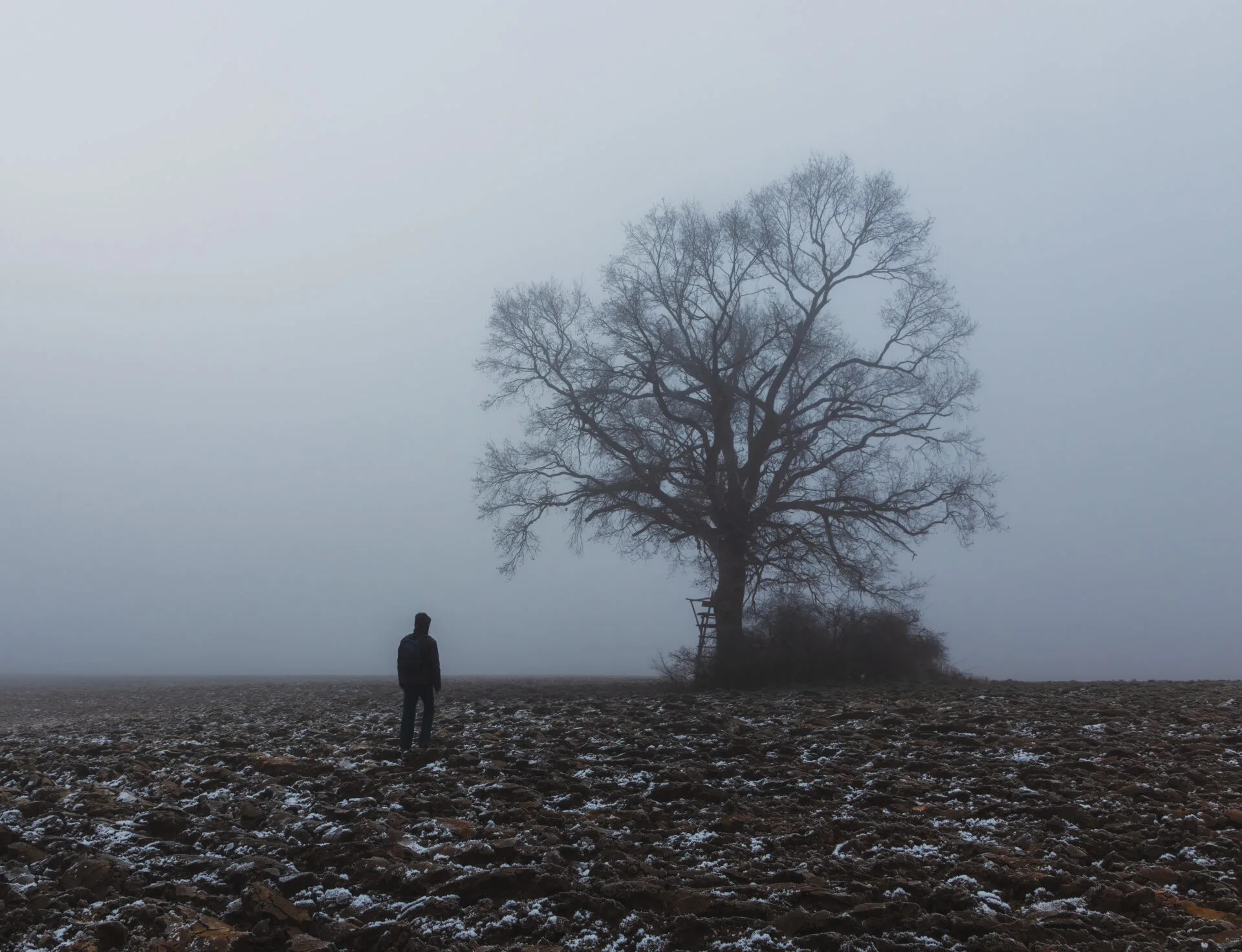by Maria Haskins
It’s only natural that ecological horror, ecohorror, is so prevalent in popular culture. With Earth entering the Anthropocene, a time when humans are having a substantial impact on our planet’s climate and ecosystems, and with the effects of climate change becoming ever more obvious and dire, ecohorror is part of our everyday lives.
“Everything here wants to kill you.”
A.C. Wise
In the book Fear and Nature – Ecohorror Studies in the Anthropocene, edited by Christy Tidwell and Carter Soles, ecohorror is described as a genre that “represents human fears about the natural world—killer plants and animals, catastrophic weather events, and disquieting encounters with the nonhuman.” Thinking about that definition and thinking about this horror sub-genre for this column, it struck me that the first work of ecohorror I ever read was probably Ray Bradbury’s short story “Boys! Grow Giant Mushrooms in YOUR Cellars” (also called “Come into My Cellar”). In the story, an American town (and maybe the world) is being quietly invaded via mushroom spores. (You can read the story in the 1962 issue of Galaxy Magazine.)
Mushrooms and fungus, these fascinating lifeforms with their spores and mycelia, with their ability to live entwined with other species in symbiotic or parasitic relationships, are a fertile source of inspiration for ecohorror. One specific source of that inspiration is the parasitic Ophiocordyceps unilateralis fungus that takes over and controls its victims (mostly insects). To quote National Geographic, the fungus “infects a foraging ant through spores that attach and penetrate the exoskeleton and slowly takes over its behavior….the enthralled ant is compelled to leave its nest for a more humid microclimate that’s favorable to the fungus’s growth…and wait for death.”
While scientists say it’s unlikely the cordyceps fungus could do the same to people, the idea of humans being “zombified” by our new fungal overlords feature prominently in bestselling books like M.R. Carey’s The Girl with All the Gifts, and TV shows like The Last of Us. The Last of Us is based on the video game by the same name, and one of my favorite examples of fungal horror actually comes from another videogame series, specifically Resident Evil 7 and Resident Evil Village. These games feature an unsettling and rather neat twist on both the fungus-horror genre and the trope of the indestructible videogame hero as Ethan Winters, the much abused and often dismembered protagonist, encounters the ancient (and sentient) megamycete.
Recent works that delve into this rich vein of horror are Mexican Gothic by Silvia Moreno-Garcia where ecohorror mingles with dark family drama and delicious gothic vibes; the gloriously creepy What Moves the Dead by T. Kingfisher; The Ghost Woods by C.J. Cooke where ecohorror tangles with faerie lore, magic, and old folktales; and The Marigold by Andrew F. Sullivan where a toxic mold wreaks havoc in a Toronto condo tower.
Catastrophic weather events are another source of ecohorror. For example, Hurricane Katrina has inspired several fictional works, including N.K. Jemisin’s unforgettable short story “Sinners, Saints, Dragons, and Haints, in the City Beneath the Still Waters”, originally published in Postscripts, where the devastation of Katrina stirs both magic and monstrous dangers. Katrina also features prominently in Jesmyn Ward’s award-winning novel Salvage the Bones.
Terrifying environmental phenomena are front and center in movies like The Perfect Storm, The Day After Tomorrow, and Twisters, as well as in books such as John Shirley’s Stormland where perpetual tempests batter the southeastern coast of the US, and Stephen Baxter’s Flood about rising sea levels and a drowning world. On a smaller, more intimate scale, Ed Grabianowski’s creative non-fiction piece “The Blizzard Song” in Nightmare, deftly captures the peril and treacherous allure of snowstorms: “The cold of a blizzard is the breath of the void, a great howling absence prying at the window’s edge, the gap beneath the door, suckling every drop of light and energy, warmth and blood…”
Ecohorror can also feature monstrous or mutated animals (think movies like The Meg and Them!), as well as pandemics, diseases, and viruses. The rise of a mysterious ocean-borne contagion connected to changes in the environment feature prominently in Nicholas Belardes’s The Deading, where it causes death, devastation, and dread in a small seaside town. In The Bridge by John Skipp and Craig Spector, the toxic waste piled up through the years in a small Pennsylvania town gains sentience which is very bad news for humanity.
Dangers of a different kind stalk the climate change researchers at the South Pole in A.C. Wise’s short story “Tekeli-li, They Cry”, first published in Tomorrow’s Cthulhu, where ecohorror blends with cosmic horror. To quote the story’s narrator: “Everything here wants to kill you.”
Strange and monstrous aspects of nature often haunt the people and landscapes in Corey Farrenkopf’s work. In his short story “Something Aquatic, Something Hungry” in Necessary Fiction, a man makes a gut-wrenching discovery in the wreck of a fishing boat, while in “The Ecological Impacts of Resurrection: A Field Study” in The Deadlands, a daughter tagging along with her father, a scientist, encounter something deeply disturbing and thoroughly inexplicable near a marshy river. More of Farrenkopf’s ecohorror can be found in his short story collection Haunted Ecologies.
Dystopian and post-apocalyptic fiction is permeated by ecohorror, with stories commonly set in futures where life on Earth has been all-but wiped out, or at least radically damaged. In books like Cormac McCarthy’s The Road, The Children of Men by P.D. James, and Micaiah Johnson’s The Space Between Worlds and Those Beyond the Wall, people have to scrounge a living from what’s left of a changed, devastated Earth. In many of these stories, humans and society must change in order to survive, as in ChloroPhilia by Cristina Jurado, translated by Sue Burke. (I’m indebted to Rachel Cordasco’s review at Strange Horizons for making me aware of this book.)
Ben Berman Ghan’s short story “Phosphorescence” in Clarkesworld, about the end of the world and what might come after, is another great example of darkly lyrical science fiction tinged with ecohorror.
For more fiction that veers into ecohorror as it explores the dangers of climate change, check out Balance of Fragile Things by Olivia Chadha, where the death of butterflies foreshadows more devastation ahead; and the anthology I’m with the Bears: Short Stories From a Damaged Planet with stories by Margaret Atwood, David Mitchell, Paolo Bacigalupi, and others.
Ecohorror often has an added layer of human guilt, as it explores how our greed and hubris, our mistakes and neglect, have caused much of the havoc plaguing us. The link between greed and ecohorror comes through clearly in The Word for World Is Forest by Ursula Le Guin, part of her Hainish cycle, where colonialism, capitalism, violence, and war clash with environmentalism. In the TV series The Rig, the greed of the company drilling into the ocean floor of the North Sea awakens a powerful force that threatens life as we know it in Scotland and beyond.
Human guilt also plays a crucial role in Stephen Graham Jones’s The Only Good Indians. Here, ecohorror intertwines with the supernatural and spiritual as nature takes its revenge on a group of hunters in a most insidious and terrifyingly personal way.
Nature also strikes back in the short story “We Will Not Dream of Corals” by Mário Coelho in Reckoning as the coral in the oceans turn on the structures, and the people, that have been instrumental in the ocean’s destruction. It seems especially fitting that an arrogant billionaire is one of the victims here. Reckoning is a “journal of creative writing on environmental justice”, and a great source of ecohorror and ecohorror adjacent fiction.
The definition of ecohorror I quoted at the beginning of this column includes “disquieting encounters with the nonhuman”, and one of the best examples of this in fiction that I can think of is Jeff VanderMeer’s Southern Reach books. Here, it’s not individual animals, plants, or weather phenomena that pose a danger. Instead, nature and the landscape itself, become opponent and protagonist in their own right.
In VanderMeer’s Area X, humans encounter an altered natural world, one that invades and transforms them, as if evolution and mutation have been cranked up way past 11, wreaking surreal and terrifying changes on minds and bodies. To quote VanderMeer himself from his essay “Hauntings in the Anthropocene”: “The uncanny has infiltrated the real, and in some sense that boundary is forever compromised.”
In that same essay, VanderMeer delves into the many origins of Area X, including the Gulf oil spill in 2010:
“…even after they capped the well, it was still somewhere in the back of my mind, and eventually that dark swirl coalesced into a dark tunnel with words on the wall, and an invisible border and Area X: a strange place in which nature was always becoming more what it had always been without human interference: less contaminated, less compromised. Safe. Where the oil was being taken out.”
In Absolution, the latest instalment in the Southern Reach series, which serves as both prequel and sequel to the previous books, the natural world in Area X evolves in frightening yet sometimes also oddly beautiful ways. White rabbits devour crabs. People turn into moaning creatures in the tall grass. Weapons and gear brought into Area X gain life, and voices, of their own. My personal favorite example of transformation in Absolution is the Tyrant, a giant alligator released by researchers into Area X where it soon evolves into something Other: sometimes appearing as a terrifying harbinger of doom and devourer of men, and sometimes, perhaps, also a kind of psychopomp with a profound connection to the altered world.
If you’re looking for other works that have something of the unhinged, surreal vibe of VanderMeer’s fiction, I highly recommend the TV series Scavengers Reign. This beautifully animated show plays out on an exoplanet where the local flora and fauna (it’s often hard to tell them apart in this world) affect the stranded humans in unpredictable, mind-bending, and often shocking ways. As in VanderMeer’s work, there’s both beauty and horror in these interactions.
Finally, my bonus, maybe heretical, ecohorror recommendation is an old classic: Herman Melville’s Moby Dick. It’s hard to think of a better example of ecohorror than a novel that describes the bloody, murderous trade of whale hunting and ends with a monstrous creature rising from the depths to exact its (well-earned) revenge on its human nemesis.

